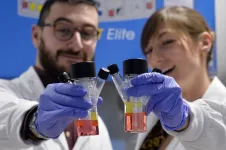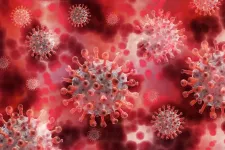INFORMATION:
This work was supported in part by the Institute for the Advancement of Food and Nutrition Sciences (IAFNS) through an International Life Sciences Institute North America Lipid Committee grant. IAFNS is a nonprofit science organization that pools funding from industry collaborators and advances science through the in-kind and financial contributions from public and private sector participants.
Media Inquiries:
Bill Harris, President, Fatty Acid Research Institute (FARI)
Email: wsh@faresinst.com
Phone: +1-913-302-9433
Website: http://www.faresinst.org
About the Fatty Acid Research Institute (FARI)
The Fatty Acid Research Institute (FARI) is a non-profit research and education foundation. FARI was founded in order to accelerate discovery of the health effects of fatty acids, most notably, the long chain omega-3 fatty acids EPA and DHA. FARI researchers and scientists will focus single-mindedly on publishing high-quality research studies on the multiple relationships between fatty acid levels and human (and animal) health outcomes. These studies will improve the ability to predict risk for disease, and more importantly, suggest ways to reduce risk by changing our diets and/or supplementation regimens. http://www.faresinst.org
About the Framingham Study
Since our beginning in 1948, the Framingham Heart Study, under the direction of the National Heart, Lung, and Blood Institute (NHLBI), formerly known as the National Heart Institute, has been committed to identifying the common factors or characteristics that contribute to cardiovascular disease (CVD). We have followed CVD development over a long period of time in three generations of participants. Our Study began in 1948 by recruiting an Original Cohort of 5,209 men and women between the ages of 30 and 62 from the town of Framingham, Massachusetts, who had not yet developed overt symptoms of cardiovascular disease or suffered a heart attack or stroke. Since that time the Study has added an Offspring Cohort in 1971, the Omni Cohort in 1994, a Third Generation Cohort in 2002, a New Offspring Spouse Cohort in 2003, and a Second Generation Omni Cohort in 2003. https://framinghamheartstudy.org/
A low Omega-3 index is just as strong a predictor of early death as smoking
A new research paper published in the American Journal of Clinical Nutrition last week showed that a low Omega-3 Index is just as powerful in predicting early death as smoking
2021-06-24
(Press-News.org) A new research paper published in the American Journal of Clinical Nutrition last week showed that a low Omega-3 Index is just as powerful in predicting early death as smoking. This landmark finding is rooted in data pulled and analyzed from the Framingham study, one of the longest running studies in the world.
The Framingham Heart Study provided unique insights into cardiovascular disease (CVD) risk factors and led to the development of the Framingham Risk Score based on eight baseline standard risk factors--age, sex, smoking, hypertension treatment, diabetes status, systolic blood pressure, total cholesterol (TC), and HDL cholesterol.
CVD is still the leading cause of death globally, and risk can be reduced by changing behavioral factors such as unhealthy diet, physical inactivity, and use of tobacco and alcohol. Therefore, researchers in this study say biomarkers integrating lifestyle choices might help identify individuals at risk and be useful to assess treatment approaches, prevent morbidity, and delay death.
Among the diet-based biomarkers are fatty acids (FAs), whether measured in plasma or red blood cell (RBC) membranes. The FAs most clearly associated with reduced risk for CVD and for total mortality (i.e., death from any cause) are the omega-3 FAs, EPA and DHA, which are typically found in fish like salmon and herring, as well as omega-3 supplements like fish and algal oil.
In a 2018 report that included 2500 participants in the Framingham Offspring Cohort followed for a median of 7.3 years (i.e., between ages ?66 and 73), the baseline RBC EPA + DHA content [the omega-3 index (O3I)] was significantly and inversely associated with risk for death from all causes.
In fact, individuals with the highest Omega-3 Index were 33% less likely to succumb during the follow-up years compared with those with the lowest Omega-3 Index. Similar associations have been seen in the Women's Health Initiative Memory Study, the Heart and Soul Study, and the Ludwigshafen Risk and Cardiovascular Health Study.
The Omega-3 Index measures the amount of EPA and DHA in red blood cell membranes and is a marker of omega-3 status. An optimal Omega-3 Index is 8% or higher, an intermediate Omega-3 Index is between 4% and 8%, and a low Omega-3 Index is 4% and below. Most Americans have an Omega-3 Index below 4%, which puts them a significantly higher risk of early death.
According to researchers in this study, the finding that any FA-based metric would have predictive power similar to that of the well-established standard risk factors was unexpected, and it suggests that RBC FAs--via imperfectly understood mechanisms--somehow reflects an in vivo milieu that consolidates into one measure the impact on the body of all these standard risk factors.
"It is interesting to note that in Japan, where the mean Omega-3 Index is greater than 8%, the expected life span is around five years longer than it is in the United States, where the mean Omega-3 Index is about 5%. Hence, in practice, dietary choices that change the Omega-3 Index may prolong life," said Michael McBurney, PhD, FCNS-SCN, lead researcher in this study. "In the final combined model, smoking and the Omega-3 Index seem to be the most easily modified risk factors. Being a current smoker (at age 65) is predicted to subtract more than four years of life (compared with not smoking), a life shortening equivalent to having a low vs. a high Omega-3 Index."
"The information carried in the concentrations of four red blood cell fatty acids was as useful as that carried in lipid levels, blood pressure, smoking, and diabetic status with regard to predicting total mortality," said Dr. Bill Harris, who was also an author on this study. "This speaks to the power of the Omega-3 Index as a risk factor and should be considered just as important as the other established risk factors, and maybe even more so."
ELSE PRESS RELEASES FROM THIS DATE:
New microscopy method reveals single childhood cancer cells in unprecedented detail
2021-06-24
A new technique to look at tumors under the microscope has revealed the cellular make-up of Wilm's tumors, a childhood kidney cancer, in unprecedented detail. This new approach could help understand how tumors develop and grow, and fuel research into new treatments for children's cancers.
Scientists at the Princess Máxima Center for pediatric oncology developed a new imaging technique and computational pipeline to study millions of cells in 3D tissue, revealing hundreds of features from each individual cell. Their research was published this month in Nature Biotechnology.
By offering a look at individual cells within an intact organ, the new technique helps scientists analyze the molecular profile of the cells, as well as their ...
Researchers find the adhesions that build the brain's networks
2021-06-24
DURHAM, N.C. - The brain's neurons tend to get most of the scientific attention, but a set of cells around them called astrocytes - literally, star-shaped cells - are increasingly being viewed as crucial players in guiding a brain to become properly organized.
Specifically, astrocytes, which form about half the mass of a human brain, seem to guide the formation of synapses, the connections between neurons that are formed and remodeled as we learn and remember.
A new study from Duke and UNC scientists has discovered a crucial protein involved in the communication and coordination between astrocytes as they build synapses. Lacking this molecule, called hepaCAM, astrocytes aren't as sticky as they ...
A 'tasty' protein may lead to new ways to treat metabolic and immune diseases
2021-06-24
GRAND RAPIDS, Mich. (June 24, 2021) -- The same taste-sensing molecule that helps you enjoy a meal from your favorite restaurant may one day lead to improved ways to treat diabetes and other metabolic and immune diseases.
TRPM5 is a specialized protein that is concentrated in the taste buds, where it helps relay messages to and from cells. It has long been of interest to researchers due to its roles in taste perception and blood sugar regulation.
Now, a team led by scientists at Van Andel Institute has published the first-ever high-resolution images of TRPM5, which reveal two areas that may serve as targets for new medications. The structures also may aid in the development of low-calorie alternative sweeteners that mimic sugar. The findings were published today in Nature ...
Collection of starshade research helps advance exoplanet imaging by space telescopes
2021-06-24
BELLINGHAM, Washington, USA - The open access Journal of Astronomical Telescopes, Instruments, and Systems (JATIS) has published END ...
Searching for the cell of origin of childhood brain cancer
2021-06-24
The study was conducted by an international collaboration involving the research team led by Luca Tiberi of the Armenise-Harvard Laboratory of Brain Cancer at the Department of Cellular, computational and integrative biology - Cibio of UniTrento, the Paris Brain Institute-Institut du Cerveau at Sorbonne Université in Paris, the Hopp Children´s Cancer Center (KiTZ) in Heidelberg, Germany, and Sapienza University in Rome. It was supported by Fondazione Armenise-Harvard, Fondazione Airc (Italian Association for Cancer Research) and Fondazione Caritro from Trento. The findings of the study, published in Science Advances, could lead to better and more effective treatments.
The team of researchers is proud of the results achieved. Luca Tiberi, coordinator of the study and corresponding ...
Scientists explain the behaviour of the optical emission of blazars
2021-06-24
Dmitry Blinov is a co-author of the article and Senior Research Associate in the Department of Astrophysics, St Petersburg University. He notes that researchers have been studying the optical polarisation from active galactic nuclei for more than 50 years. Some of the first academic papers on this topic were published back in the 1960s by Vladimir Hagen-Thorn, Professor in the Department of Astrophysics, St Petersburg University, and Viktor Dombrovskiy, Associate Professor in the Department of Astrophysics, Leningrad State University.
In the Universe, the main material is concentrated in galaxies with hundreds of billions of stars: there are about 200-400 of them in the Milky Way. At the centre of galaxies there are supermassive ...
Decoding humans' survival from coronaviruses
2021-06-24
An international team of researchers co-led by the University of Adelaide and the University of Arizona has analysed the genomes of more than 2,500 modern humans from 26 worldwide populations, to better understand how humans have adapted to historical coronavirus outbreaks.
In a paper published in Current Biology, the researchers used cutting-edge computational methods to uncover genetic traces of adaptation to coronaviruses, the family of viruses responsible for three major outbreaks in the last 20 years, including the ongoing pandemic.
"Modern human genomes contain evolutionary ...
Repurposing rheumatology drugs for COVID-19
2021-06-24
Rheumatologists are familiar with the everyday use of immunomodulatory drugs. These are designed to treat the inflammation caused by autoimmune diseases such as rheumatoid arthritis. A EULAR taskforce was set up to develop a set of new points to consider to give guidance and advice on the best way to use these medicines to treat COVID-19. The taskforce included rheumatologists, immunologists, haematologists, paediatricians, patients and other health professionals. They looked at the published evidence on the use of immunomodulatory therapies to treat severe COVID-19.
In total, there are two overarching principles and 14 points to consider. The principles stress that the picture of SARS-CoV-2 infection can be very different in different people. Infections range from asymptomatic ...
Ethane proxies for methane in oil and gas emissions
2021-06-24
Measuring ethane in the atmosphere shows that the amounts of methane going into the atmosphere from oil and gas wells and contributing to greenhouse warming is higher than suggested by the U.S. Environmental Protection Agency, according to an international team of scientists who spent three years flying over three areas of the U.S. during all four seasons.
"Ethane is a gas that is related only to certain sources of methane," said Zachary R. Barkley, researcher in meteorology and atmospheric science, Penn State. "Methane, however, is produced by oil, ...
Points to consider for studies of work participation in people with inflammatory arthritis
2021-06-24
Understanding work participation is important, but the way in which this is defined and measured in clinical trials is not always the same, which has made it hard to compare data. EULAR set up a taskforce to draft points to consider when designing studies that use work participation as a measure. The taskforce included doctors, experts and patients from 11 countries. They used the published evidence to draw up a set of points to consider.
Two overarching principles and nine points to consider were developed. The principles say that work participation is important for people with inflammatory arthritis, their ...
LAST 30 PRESS RELEASES:
New software sheds light on cancer’s hidden genetic networks
UT Health San Antonio awarded $3 million in CPRIT grants to bolster cancer research and prevention efforts in South Texas
Third symposium spotlights global challenge of new contaminants in China’s fight against pollution
From straw to soil harmony: International team reveals how biochar supercharges carbon-smart farming
Myeloma: How AI is redrawing the map of cancer care
Manhattan E. Charurat, Ph.D., MHS invested as the Homer and Martha Gudelsky Distinguished Professor in Medicine at the University of Maryland School of Medicine
Insilico Medicine’s Pharma.AI Q4 Winter Launch Recap: Revolutionizing drug discovery with cutting-edge AI innovations, accelerating the path to pharmaceutical superintelligence
Nanoplastics have diet-dependent impacts on digestive system health
Brain neuron death occurs throughout life and increases with age, a natural human protein drug may halt neuron death in Alzheimer’s disease
SPIE and CLP announce the recipients of the 2025 Advanced Photonics Young Innovator Award
Lessons from the Caldor Fire’s Christmas Valley ‘Miracle’
Ant societies rose by trading individual protection for collective power
Research reveals how ancient viral DNA shapes early embryonic development
A molecular gatekeeper that controls protein synthesis
New ‘cloaking device’ concept to shield sensitive tech from magnetic fields
Researchers show impact of mountain building and climate change on alpine biodiversity
Study models the transition from Neanderthals to modern humans in Europe
University of Phoenix College of Doctoral Studies releases white paper on AI-driven skilling to reduce burnout and restore worker autonomy
AIs fail at the game of visual “telephone”
The levers for a sustainable food system
Potential changes in US homelessness by ending federal support for housing first programs
Vulnerability of large language models to prompt injection when providing medical advice
Researchers develop new system for high-energy-density, long-life, multi-electron transfer bromine-based flow batteries
Ending federal support for housing first programs could increase U.S. homelessness by 5% in one year, new JAMA study finds
New research uncovers molecular ‘safety switch’ shielding cancers from immune attack
Bacteria resisting viral infection can still sink carbon to ocean floor
Younger biological age may increase depression risk in older women during COVID-19
Bharat Innovates 2026 National Basecamp Showcases India’s Most Promising Deep-Tech Ventures
Here’s what determines whether your income level rises or falls
SCIE indexation achievement: Celebrate with Space: Science & Technology
[Press-News.org] A low Omega-3 index is just as strong a predictor of early death as smokingA new research paper published in the American Journal of Clinical Nutrition last week showed that a low Omega-3 Index is just as powerful in predicting early death as smoking



